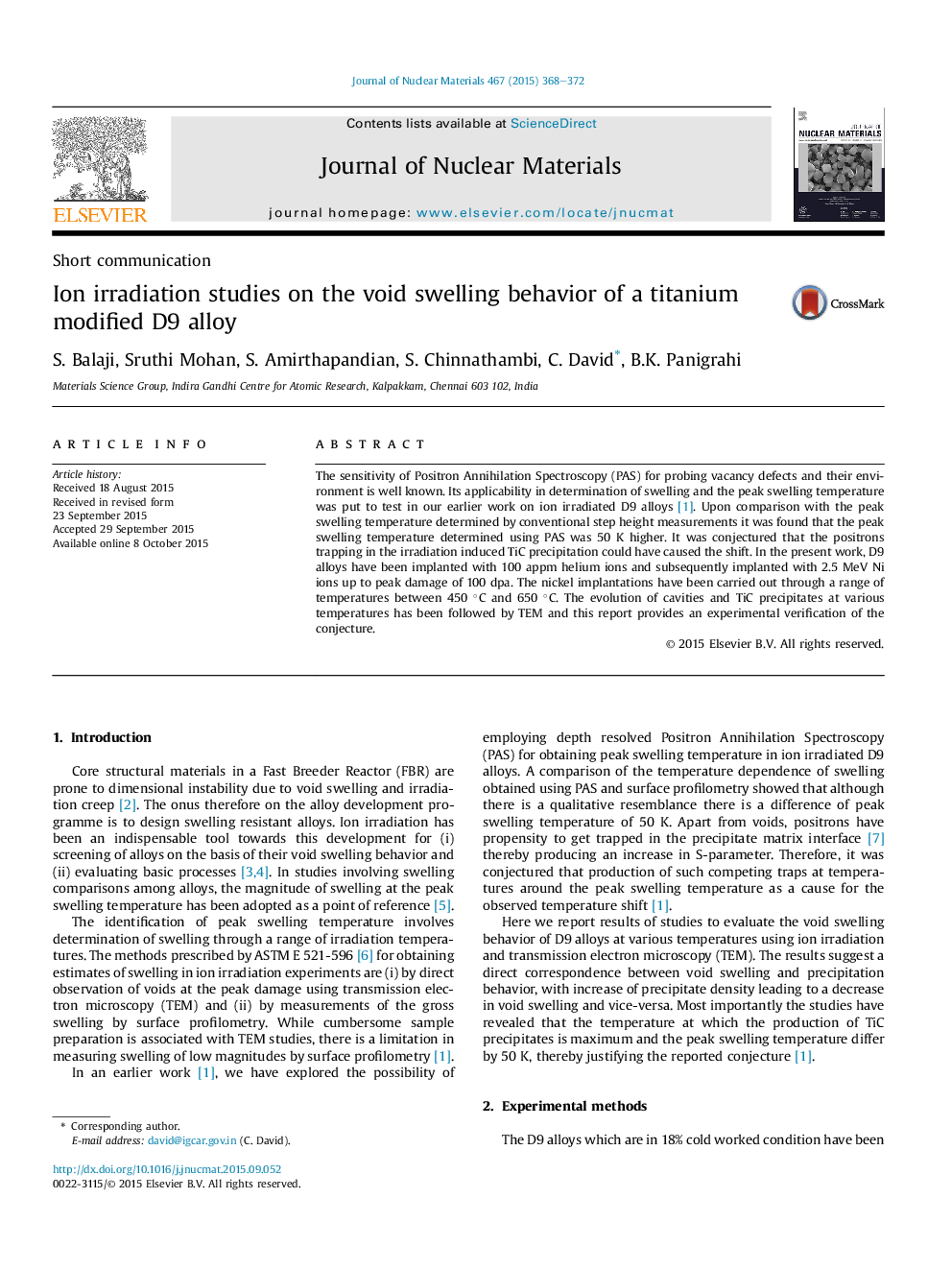| Article ID | Journal | Published Year | Pages | File Type |
|---|---|---|---|---|
| 1564894 | Journal of Nuclear Materials | 2015 | 5 Pages |
The sensitivity of Positron Annihilation Spectroscopy (PAS) for probing vacancy defects and their environment is well known. Its applicability in determination of swelling and the peak swelling temperature was put to test in our earlier work on ion irradiated D9 alloys [1]. Upon comparison with the peak swelling temperature determined by conventional step height measurements it was found that the peak swelling temperature determined using PAS was 50 K higher. It was conjectured that the positrons trapping in the irradiation induced TiC precipitation could have caused the shift. In the present work, D9 alloys have been implanted with 100 appm helium ions and subsequently implanted with 2.5 MeV Ni ions up to peak damage of 100 dpa. The nickel implantations have been carried out through a range of temperatures between 450 °C and 650 °C. The evolution of cavities and TiC precipitates at various temperatures has been followed by TEM and this report provides an experimental verification of the conjecture.
